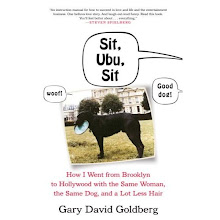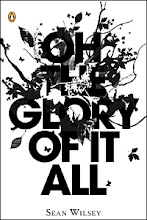 On Tuesday, a federal mediator joins the talks between the Writers’ Guild of America and the Alliance of Motion Picture & Television Producers. Time's ticking, and it's not looking rosy. “Writers could walk out as early as Thursday if their union can't hammer out a new three-year employment contract with the studios to replace one that expires at midnight on Wednesday,”according to the Los Angeles Times.
On Tuesday, a federal mediator joins the talks between the Writers’ Guild of America and the Alliance of Motion Picture & Television Producers. Time's ticking, and it's not looking rosy. “Writers could walk out as early as Thursday if their union can't hammer out a new three-year employment contract with the studios to replace one that expires at midnight on Wednesday,”according to the Los Angeles Times.So why is everyone at loggerheads? “This showdown between writers and producers is the result of a long-brewing fight over payment for online distribution of TV shows, movies, Webisodes and other new-media content,” explains Maureen Ryan in the Chicago Tribune. “In Hollywood, the WGA-AMPTP battle is widely regarded as a defining moment in the entertainment industry's digital coming-of-age...The guild wants jurisdiction over such works and it wants agreed-upon payment rates for new-media content;
 it wants an increase in the DVD compensation rate; and it wants a percentage of revenue derived from content sold over the Internet or delivered with advertising.”
it wants an increase in the DVD compensation rate; and it wants a percentage of revenue derived from content sold over the Internet or delivered with advertising.”And what would TV look like during a strike? Daily, late-night shows will be hit first. In primetime, “Long-running shows like NBC's ‘Law & Order: Special Victims Unit’ are likely to stay in original episodes longer because they are further ahead in production than new programs like ABC's ‘Pushing Daisies,’” writes Brooke Barnes in The New York Times.
Animated series like ''The Simpsons'' and ''Family Guy,'' completed up to a year in advance, are strike-proof for this season at least. Much more problematic are complicated serial dramas like ''Lost,'' which networks typically broadcast without repeats...Networks have been stockpiling reality material in the event of a strike. The CW network alone has five completed reality series ready to go: the returning shows ''America's Next Top Model,'' ''Beauty and the Geek'' and ''Pussycat Dolls Present,'' and the new entries ''Farmer Wants a Wife'' and ''Crowned,'' about beauty pageants.
ABC has two reality shows from Oprah lined up: “Oprah Winfrey's The Big Give” and “Your Money or Your Life.” CBS has ordered up episodes of game show “Million Dollar Password” with Regis Philbin. “Dateline” might even make a comeback on NBC. The Peacock has also floated the idea of running the British version of “The Office.” The networks could possibly dip into their cable offerings for rebroadcast on primetime. FX's “Damages” could air on Fox. Past episodes of USA's “Monk” or the new season of Bravo's “Project Runway” could air on NBC while ABC could replay Lifetime's “Army Wives” or even ABC Family's “Kyle XY” or “Greek.”









